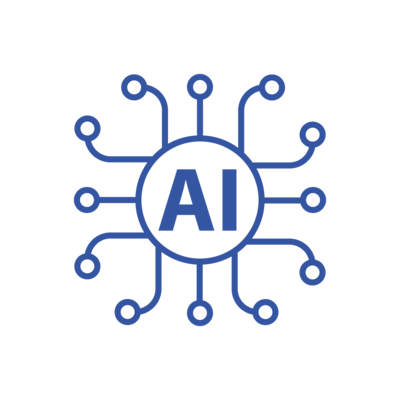Artificial Intelligence Course Overview
Ready to explore the fascinating world of Artificial Intelligence? This course is your gateway to understanding how AI works and how it's transforming our world. We’ll cover everything from the basics of machine learning and neural networks to how AI is used in natural language processing and robotics.
You'll get hands-on experience with real projects and case studies, which will help make tricky ideas easier to understand. By the end of the course, you'll be ready to create and evaluate your own AI solutions, whether you're starting a tech career or exploring AI research more deeply. Join us and get excited about the future of technology!
This course will also cover the important ethical questions and social effects of AI. You’ll learn not just how to build AI systems, but also how to do it responsibly. Expect fun lectures, engaging discussions, and group projects that link theory to real life.
You’ll have access to helpful resources and tools to support your learning. Whether you’re a beginner eager to dive in or someone looking to expand your AI knowledge, this course offers a friendly space to grow your skills. Get ready to discover new opportunities and make a real difference in AI!
Throughout the course, you’ll have chances to meet industry professionals and fellow students, giving you insights into the latest trends and future directions in AI. We focus on practical applications, so you’ll tackle real-world challenges and build a portfolio that shows off your skills.
With support from experienced instructors and access to the latest tools, you’ll be well-prepared for exciting roles in AI or for more specialized studies. By the end of the course, you’ll understand the technical side of AI and be ready to innovate and make meaningful contributions. Join us on this exciting journey and be part of the AI revolution!
To ensure you get the most out of your learning experience, our AI Course offers flexible schedules and a range of learning formats, including live sessions, on-demand videos, and interactive exercises. You'll also benefit from personalized feedback and guidance, helping you to refine your skills and tackle any challenges you might face.
As you progress, you'll be encouraged to think critically and creatively about AI’s potential applications and its role in shaping the future. By the course’s end, you’ll be equipped with the knowledge, experience, and confidence to thrive in the dynamic world of Artificial Intelligence. Ready to embark on this transformative journey? Enroll today and start making an impact with AI!
Artificial Intelligence Course Curriculum
Topics: Python Basics
- Sum / Average / Count / Max / Min
- Chart
- Text
- Need for Programming
- Advantages of Programming
- Overview of Python
- Organizations using Python
- Python Applications in Various Domains
- Python Installation
- Variables
- Operands and Expressions
- Conditional Statements
- Loops
- Command Line Arguments
- Different Types of Arguments
- Global Variables
- Global Keyword
- Variable Scope and Returning Values
- Lambda Functions
- Various Built-In Functions
- Introduction to Object-Oriented Concepts
- Built-In Class Attributes
- Public, Protected and Private Attributes, and Methods
- Class Variable and Instance Variable
- Constructor and Destructor
- Decorator in Python
- Core Object-Oriented Principles
- Inheritance and Its Types
- Method Resolution Order
- Overloading
- Overriding
- Getter and Setter Methods
- Inheritance-In-Class Case Study
Topics: Data Structure and File Operations
- Method of Accepting User Input and eval Function
- Python - Files Input/Output Functions
- Lists and Related Operations
- Tuples and Related Operations
- Strings and Related Operations
- Sets and Related Operations
- Dictionaries and Related Operations
Topics: Functions and Object Oriented Programming
- User-Defined Functions
- Concept of Return Statement
- Concept of name=” main ”
- Function Parameters
Topics: Working with Modules and Handling Exceptions
- Standard Libraries
- Packages and Import Statements
- Reload Function
- Important Modules in Python
- Sys Module
- Os Module
- Math Module
- Date-Time Module
- Random Module
- JSON Module
- Regular Expression
- Exception Handling
Topics: Introduction to NumPy
- Basics of Data Analysis
- NumPy - Arrays
- Operations on Arrays
- Indexing Slicing and Iterating
- NumPy ArrayAttributes
- Matrix Product
- NumPy Functions
- Functions
- Array Manipulation
- File Handling Using NumPy
- Array Creation and Logic Functions
- File Handling Using Numpy
Topics: Data Manipulation using pandas
- Introduction to pandas
- Data structures in pandas
- Series Data Frames
- Importing and Exporting Files in Python
- Basic Functionalities of a Data Object
- Merging of Data Objects
- Concatenation of Data Objects
- Types of Joins on Data Objects
- Data Cleaning using pandas
- Exploring Datasets
Topics: Basics of Data Science
- What is Data Science?
- What does Data Science involve?
- Era of Data Science
- Business Intelligence vs Data Science
- Life cycle of Data Science
- Tools of Data Science
- Application of Data Science
Topics: Exploratory Data Analysis
- Introduction
- Stages of Analytics
- CRISP DM Data Life Cycle
- Data Types
- Introduction to EDA
- First Business Moment Decision
- Second Business Moment Decision
- Third Business Moment Decision
- Fourth Business Moment Decision
- Correlation
Topics: Feature Engineering
- What is Feature
- Feature Engineering
- Feature Engineering Process
- Benefit
- Feature Engineering Techniques
Topics: Inferential Statistics & Hypothesis Testing
- Basics Of Probability
- Discrete Probability Distributions
- Continuous Probability Distributions
- Central Limit Theorem
- Concepts Of Hypothesis Testing - I: Null And Alternate Hypothesis, Making A Decision, And Critical
- Value Method
- Concepts Of Hypothesis Testing - II: P-Value Method And Types Of Errors Industry Demonstration
- Of Hypothesis Testing: Two-Sample Mean And Proportion Test, A/B Testing
Topics: Linear Regression
- Simple Linear Regression
- Simple Linear Regression In Python
- Multiple Linear Regression
- Multiple Linear Regression In Python
- Industry Relevance Of Linear Regression
Topics: Logistic Regression
- Univariate Logistic Regression
- Multivariate Logistic Regression: Model
- Building And Evaluation
- Logistic Regression:
- Industry Applications
Topics: KNN classifier
- Data mining classifier technique
- Application of KNN classifier
- Lazy learner classifier
- Altering hyperparameter(k) for better accuracy
Topics: Support Vector classifier
- Black box
- SVM hyperplane
- Max margin hyperplane
- Kernel tricks for non linear spaces
Topics: Decision Tree Classifier
- Rule based classification method
- Different nodes for develop decision trees
- Discretization
- Entropy
- Greedy approach
- Information gain
Topics: Ensemble Learning
- Challenges with standalone model
- Reliability and performance of a standalone model
- Homogeneous & Heterogeneous Ensemble Technique
- Bagging Boosting
- Random forest
- Stacking
- Voting & Averaging technique
Topics: Time Series Analysis
- Difference between cross sectional and time series data
- Different component of time series data
- Visualization techniques for time series data
- Model based approach
- Data driven based approach
Topics: Clustering
- Difference between Supervised and Unsupervised Learning
- Prelims of clustering
- Measuring distance between record and groups
- Linkage functions
- Dendrogram
Topics: Dimensionality Reduction
- Dimension reduction
- Application of PCA
- PCA & its working
- SVD & its working
Topics: Market Basket Analysis
- Point of Sale
- Application of Association rules
- Measure of association rules
- Drawback of measure of association rules
- Condition probability
- Lift ratio
Topics: Introduction to Perceptron, Multilayer Perceptron/ANN
- Black box techniques
- Intution of neural networks
- Perceptron algorithm
- Calculation of new weights
- Non linear boundaries in MLP
- Integration function
- Activation function
- Error surface
- Gradient descent algo
Topics: Deep Learning Black Box Technique - CNN, RNN
- Imagenet classification challenges
- Convolution network applications
- Challenges in classifying the images using MLP
- Parameter explosion
- Pooling layers
- Fully connected layers
- Alexnet case study
- Modelling sequence data
- Vanishing/Gradient descent explode
Topics: Platforms for Deep Learning & Deep Learning Software Libraries
- What is a Deep Learning Platform?
- H2O.ai
- Dato GraphLab
- What is a Deep Learning Library?
- Theano
- Deeplearning4j
- Torch
- Caffe
Topics: Basic Visualization Tools
- Bar Charts
- Histograms
- Pie Charts
- Box Plots
Topics: Basic Visualization Tools Continued
- Scatter Plots
- Line Plots and Regression
Topics: Specialized Visualization Tools
- Pair plot
- Word Clouds
- Radar Charts
- Waffle Charts
Topics: Text Mining & Natural Language Processing
- Text data generating sources
- How to give structure to text structure using bag of words
- Terminology used in text data analysis
- DTM & TDM
- TFIDF & its usage
- Word cloud and its interpretation
Topics: Getting Started and Creating, Selecting & Retrieving Data with SQL
- Introduction to Databases
- How to create a Database instance on Cloud?
- Provision a Cloud hosted Database instance.
- What is SQL?
- Thinking About Your Data
- Relational vs. Transactional Models ER Diagram
- CREATE Table Statement and DROP tables
- UPDATE and DELETE Statements
- Retrieving Data with a SELECT Statement
- Creating Temporary Tables
- Adding Comments to SQL
Topics: Filtering, Sorting, and Calculating Data with SQL
- Basics of Filtering with SQL
- Advanced Filtering: IN, OR, and NOT
- Using Wildcards in
- SQL Sorting with ORDER BY
- Math Operations
- Aggregate Functions
- Grouping Data with SQL
Topics: Subqueries and Joins in SQL
- Using Subqueries
- Subquery Best Practices and Considerations
- Joining Tables
- Cartesian (Cross) Joins
- Inner Joins
- Aliases and Self Joins
- Advanced Joins: Left, Right, and Full Outer Joins
- Unions
Topics: Modifying and Analyzing Data with SQL
- Working with Text Strings
- Working with Date and Time Strings
- Date and Time Strings Examples
- Case Statements
- Views
- Data Governance and Profiling
- Using SQL for Data Science
Topics: Accessing Databases using Python
- How to access databases using Python?
- Writing code using DB-API
- Connecting to a database using DB API
- Create Database Credentials
- Connecting to a database instance
- Creating tables, loading, inserting, data and querying data
- Analyzing data with Python
Topics: Text Mining & Natural Language Processing
- Input data & handling large spreadsheets
- Tricks to get your work done faster
- Automating data analysis (Excel VLOOKUP, IF Function, ROUND and more)
- Transforming messy data into shape
- Cleaning, Processing and Organizing large data
- Spreadsheet design principles
- Drop-down lists in Excel and adding data validation to the cells.
- Creating Charts & Interactive reports with Excel Pivot Tables, Pivot
- Charts, Slicers and Timelines
- Functions like: - COUNTIFS, COUNT, SUMIFS, AVERAGE and many more.
- Excel features: Sort, Filter, Search & Replace Go to Special etc...
- Importing and Transforming data (with Power Query)
- Customize the Microsoft Excel interface
- Formatting correctly for professional reports.
- Commenting on cells.
- Automate data entry with Autofill and Flash-fill.
- Writing Excel formulas & referencing to other workbooks/worksheets.
- Printing options
- Charts beyond column and bar
- Charts: - Pareto chart, Histogram, Tree map, Sunburst charts & more
Topics: Analyzing and Visualizing Data using Tableau
- Introduction to Data Visualization
- Tableau Introduction and Tableau Architecture
- Exploring Data using Tableau
- Working with Data using Tableau including Data Extraction and Blending
- Various Charts in Tableau (Basics to Advanced)
- Sorting-Quick Sort, Sort from Axis, Legends, Axis, Sort by Fields
- Filtering- Dimension Filters, Measure Filters, Date Filters, Tableau Context Filters Groups, Sets and
- Combined Sets
- Reference Lines, Bands and Distribution
- Reference Lines, Bands and Distribution
- Parameters, Dynamic Parameters and Actions
- Forecasting-Exponential Smoothening Techniques
- Clustering
- Calculated Fields in Tableau, Quick Tables
- Tableau Mapping Features
- Tableau Dashboards, Dashboards Action and Stories
Topics: Introduction To Power BI
- Introduction to Power BI-Need, Imprtance
- Power BI - Advantages and Scalable Options
- Power BI Data Source Library and DW Files
- Business Analyst Tools, MS Cloud Tools
- Power BI Installation
- Power BI Desktop - Instalation, Usage
- Sample Reports and Visualization Controls
- Understanding Desktop & Mobile Editions
- Report Rendering Options and End User Access
Topics: Creating POWER BI Reports, Auto Filters
- Report Design with Databse Tables
- Report Visuals, Fields and UI Options
- Reports with Multiple Pages and Advantages
- Pages with Multiple Visualizations. Data Access
- “GET DATA” Options and Report Fields, Filters
- Report View Options: Full, Fit Page, Width Scale
- Report Design using Databases & Queries
Topics: Report Visualization And Properties
- Power BI Design: Canvas, Visualizations, and Fileds
- Import Data Options with Power BI Model, Advantages
- Data Fields and Filters with Visualizations
- Visualization Filters, Page Filters, Report Filters
- Creating Customised Tables with Power BI Editor
- General Properties, Sizing, Dimensions, and Positions
- Grid Properties (Vertical, Horizontal) and Styles
- Page Level Filters and Report Level Filters
- Visual-Level Filters and Format Options
- Report Fields, Formats and Analytics
Topics: Chart And Map Report Properties
- CHART Report Types and Properties
- STACKED BAR CHART, STACKED COLUMN CHART
- CLUSTERED BAR CHART, CLUSTERED COLUMN CHART
- Field Properties
- Formats: Legend, Axis, Data Labels, Plot Area
- Data Labels: Visibility, Color and Display Units
- Analytics: Constant Line, Position, Labels
- Map Reports: Working with Map Reports
- Hierarchies: Grouping Multiple Report Fields
- Advanced Query Mode @ Connection Settings - Options
Topics: DAX EXPRESSIONS
- Purpose of Data Analysis Expresssions (DAX)
- Scope of Usage with DAX. Usabilty Options
- DAX Context: Row Context and Filter Context
- DAX Entities: Calculated Columns and Measures
- DAX Data Types: Numeric, Boolean, Variant, Currency
- Datetime Data Tye with DAX. Comparison with Excel
- DAX Operators & Symbols. Usage. Operator Priority
- Parenthesis, Comparison, Arthmetic, Text, Logic
- DAX Functions and Types: Table Valued Functions
- Filter, Aggregation and Time Intelligence Functions
- Information Functions, Logical, Parent-Child Functions
- Statistical and Text Functions. Formulas and Queries
- Syntax Requirements with DAX. Differences with Excel
- Naming Conventions and DAX Format Representation
- Working with Special Characters in Table Names
- Attribute / Column Scope with DAX-Examples
- Measure / Column Scope with DAX-Examples











.webp)
.webp)
.webp)
.webp)
.webp)
.webp)
.webp)
.webp)
.webp)
.webp)
.webp)
.webp)
.webp)
.webp)
.webp)
.webp)
.webp)
.webp)
.webp)
.webp)
.webp)
.webp)






























